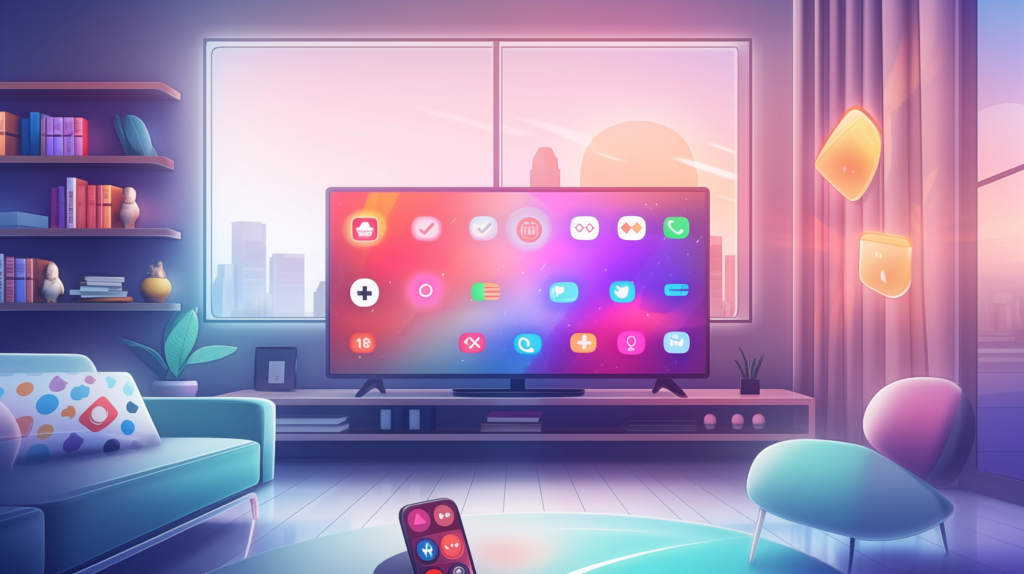
Internet Protocol Television (IPTV) has transformed how we consume media, offering flexibility, on-demand access, and a more personalized viewing experience compared to traditional cable or satellite TV. As we approach 2025, IPTV is poised for even greater advancements, driven by faster internet speeds, AI integration, and shifting consumer habits.
For viewers, understanding these changes is crucial—whether you're a casual streamer or a cord-cutter looking for the best entertainment options. This article explores the key developments shaping the future of IPTV and what they mean for the average consumer.
Table of Contents
- The Decline of Traditional TV and IPTV’s Dominance
- AI and Machine Learning: Smarter Content Recommendations
- Next-Level Streaming Quality: 8K, HDR, and Adaptive Bitrate
- Hybrid IPTV: The Best of Both Worlds
- Tighter Security & the Fight Against Piracy
- Cloud DVR & Multi-Device Streaming Become Standard
- Regulatory Challenges & Net Neutrality Concerns
- Conclusion: What Should Viewers Expect by 2025?
1. The Decline of Traditional TV and IPTV’s Dominance
The shift from cable and satellite TV to IPTV has been accelerating for years, and by 2025, industry analysts predict that IPTV will account for a majority of TV viewership worldwide. Several factors contribute to this trend:
- Cost Efficiency: IPTV services are often more affordable than traditional TV packages, with customizable subscription models.
- On-Demand Content: Unlike scheduled broadcasts, IPTV allows users to watch what they want, when they want.
- Global Accessibility: With an internet connection, viewers can access content from anywhere, eliminating regional restrictions.
As fiber-optic and 5G networks expand, buffering and latency issues will decrease, making IPTV an even more attractive alternative to conventional TV.
2. AI and Machine Learning: Smarter Content Recommendations
One of IPTV’s biggest advantages is its ability to learn user preferences. By 2025, AI-driven algorithms will become even more sophisticated, offering:
- Hyper-Personalized Suggestions: Platforms will analyze viewing history, time spent on content, and even mood-based preferences (e.g., recommending light-hearted shows after a user watches intense dramas).
- Automated Content Curation: AI could generate custom channel lineups based on individual tastes, blending live TV, on-demand, and niche streaming services.
- Voice and Visual Search: Instead of typing, users may simply speak or even use image recognition to find shows ("Find movies with this actor" while pointing at the screen).
These advancements will make content discovery effortless, reducing the time users spend browsing and increasing engagement.
3. Next-Level Streaming Quality: 8K, HDR, and Adaptive Bitrate
Streaming quality has improved dramatically, and by 2025, expect:
- 8K Streaming: While still niche, 8K IPTV services will emerge for early adopters with compatible TVs.
- Enhanced HDR & Dolby Vision: More content will support dynamic HDR formats, offering richer colors and deeper contrasts.
- Better Compression (AV1 & VVC Codecs): New video codecs will reduce bandwidth usage without sacrificing quality, making 4K streaming smoother even on slower connections.
Additionally, adaptive bitrate streaming will become more refined, automatically adjusting resolution based on network conditions to prevent buffering.
4. Hybrid IPTV: The Best of Both Worlds
Some providers are merging traditional TV with IPTV, creating hybrid models that offer:
- Live TV + On-Demand: Seamless integration of broadcast channels with streaming libraries.
- Fallback to Broadcast During Internet Outages: Ensures uninterrupted viewing even if the internet drops.
- Single-Platform Access: One interface for all content, eliminating the need to switch between apps.
This approach appeals to viewers who still want live news, sports, and events without sacrificing the convenience of streaming.
5. Tighter Security & the Fight Against Piracy
As IPTV grows, so does piracy. By 2025, expect:
- Blockchain-Based DRM: Some services may use blockchain to verify legitimate subscribers and track content distribution.
- Dynamic Watermarking: Invisible identifiers in streams to trace illegal redistributors.
- Stricter ISP Enforcement: Governments may pressure internet providers to block unauthorized IPTV services.
Legal IPTV platforms will likely invest more in exclusive content and anti-piracy tech to stay competitive.
6. Cloud DVR & Multi-Device Streaming Become Standard
- Unlimited Cloud DVR: No more storage limits—record hundreds of shows without deleting old ones.
- Seamless Multi-Device Switching: Start watching on a phone, continue on a TV, and finish on a tablet without interruption.
- Offline Viewing Enhancements: Download options for 4K/HDR content with longer expiration times.
7. Regulatory Challenges & Net Neutrality Concerns
The growth of IPTV may lead to:
- New Broadcasting Laws: Governments could impose stricter rules on streaming providers.
- Internet Throttling Debates: If net neutrality is weakened, ISPs might slow down IPTV traffic unless providers pay for "fast lanes."
- Content Licensing Battles: Regional restrictions could tighten, affecting VPN usage for accessing geo-blocked content.
Viewers should stay informed about policy changes that could impact streaming freedoms.
Conclusion: What Should Viewers Expect by 2025?
By 2025, IPTV will be faster, smarter, and more immersive than ever. Key takeaways:
- AI-driven personalization will dominate, making content discovery effortless.
- 8K and advanced HDR will become more common, but 4K will remain the standard.
- Hybrid IPTV models will bridge the gap between live TV and streaming.
- Piracy crackdowns may restrict illegal streams, pushing users toward legal services.
- Regulatory changes could impact accessibility and pricing.
For viewers, staying adaptable and informed will be key to enjoying the best that IPTV has to offer. As technology evolves, so will the ways we watch—and interact with—our favorite shows and movies.

